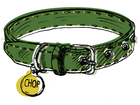With another year safely in the books, we’re doing what we do best: listing compulsively.
(Click here to read part two of our Best of 2013 list.)
(Click here to read part three of our Best of 2013 list.)
(Click here to see the rest of our year-end coverage.)
25. Ridiculous Fishing (Vlambeer)

Ridiculous Fishing is a masterclass in short-session gameplay, responsive controls, and shifting mechanics over the course of a play session. It is also a game that lets you shoot jellyfish out of the air with a shotgun. Love it for its its vibrant, chunky visual aesthetic and its sprightly music, but the real draw of Ridiculous Fishing is the way each play session evolves. As you cast your lure into the watery depths, you’re navigating a swarm of obstacles; if you touch a fish—any fish—you’ll stop descending, which makes every piscine foe a potential game-ender. Then, once you’ve finally made a misstep and caught something, your ascent begins and the stakes change entirely: you’re aiming for those same fish, seeking out an almost passive-aggressive revenge. By the time you hit the surface and send your haul skyward, you’ve already won. Pulling out that shotgun and blasting them into a bloody mist is really almost an afterthought. — Nathaniel Ewert-Krocker
24. Salty Bet (Salty)
Pretty much the backseat of the school bus of the Internet, Salty Bet’s Dreamcast Casino will expose you to all kinds of unthinkable behavior that will confound you, make you lose your faith in humanity, and ultimately corrupt you. This is not where the ambitious kids sit, but the row reserved for the mentally unstable and the irredeemably bad.
You may be confused as to why a chat room where computers throw down made this list at all. Well, it’s like this. Salty Bet’s still a game; it’s just a game you don’t get to play. This steel cage of absurd copyright infringement is strictly for the the bots. You might ask: why would anyone want to sit back in their swivel chair and watch a demo of Ken and Ryu hurling hadukens in each other’s face instead of going to the arcade?

Well, because this cognitive-dissonance slot machine randomly queues clone Ken and clone Ryu, and a pitiful excuse for Jigglypuff, and Captain Caaaaaaaaaveman!, and 20,000 obscure anime and hentai characters (the flash of pantsu triggers unanimous high-fives in the lobby), and the Google logo, and the screamer from Edvard Munch’s The Scream, and, of course, infinite incarnations of Goku that all supremely suck.
At the very least, it qualifies as a meta-game, because you and hundreds of depraved youth weened on broadband can bet fake money on the outcome of a nail-biter between, say, Kirby (of Nintendo fame) and Bloodbane (from World of Warcraft). This is both the defining moment of the Internet and the reason we should throw it into a bottomless pit and bury it. — Jason Johnson
23. Europa Universalis IV (Paradox Development Studio)
It simulates Earth, from the fall of the Byzantines to the end of the Napoleonic era; that’s four hundred years and a bit.
It lets you control any independent realm—from the pre-white man Cherokee tribes to the world-spanning British Empire.
It tells the origin story of the nation state, and teaches the underlying mechanics of human history in the meantime.

It connects with Crusader Kings 2—the game of medieval backstabbing—which turns it into a millenium-long oddyssey through alternate history, so you can stage that battle between the 17th century Jomsviking Norse and the Shia muslims of Brittany you had been thinking of.
Even with the immense complexity that lies underneath, it is both easy and joyful to interact with.
It is beautiful to look at, if you are the kind of person that can enjoy a good map. And if you are not, the system design is good enough that the game is beautiful just to behold.
Europa Universalis IV is not for everyone—but if the grandest game of 2013 sounds even slightly like your kind of thing, then you are one of the lucky ones. — Eric Friden
22. Dota 2 (Valve)
Dota 2 is bigger than 2013, it’s bigger than games, and it’s bigger than God. Its own Eden is a half-blighted garden of endless conflict and bottomless complication, with a river running crooked through the middle like a scar. Every tree, every neutral creature, each marching creep inside this place is in a state of play, a piece that can be used to press advantage. There is an assembly of murderers there (called heroes) who each have a very particular set of skills, used to stake claims on the gold and experience flowing in three channels between the corners of the map. The early skirmishes between heroes play more like sieges, with each side focused on starving the other of levels. You do this in a way that exemplifies the double-edged design of the whole game: you kill your own troops. You deny enemies the last hit that gives extra gold and XP, and watch the chummy grinding grounds of an RPG twist into the hell of total war.

Dota 2 is bigger than you, which is what truly upsets people. It’s played not by groups of five sometime collaborators but by a team of five that works together or falls apart. Sharing and sacrifice are ingrained into the roles that every player learns (carry, support, etc.) and implicit in the expectations teammates have of each other. In the famous 1-to-5 system, you have to be poor sometimes so your friend can be rich; you have to let someone else go in for the kills you could have had. Dota is a zero-sum scenario that demands more from its players than most games dream of asking, which is why winning one good match of it feels like sweeping the fucking world series of anything else. — Chris Breault
21. Corrypt (Michael Brough)
Corrypt is claustrophobic. The whole game feels like an unforgiving labyrinth. There are tight hallways and intricate mazes. If you’ve played a sokoban game before—a crate pusher—you know to stop, stay cool, not let the narrow confines get to you lest you make a critical mistake. It’s a straitjacket. If you’ve played Corrypt you may have given up at this point in the game, and I don’t fault you. I did too, until somebody gave that annoyingly cryptic, “No, you’ve got to keep playing. Trust me.” So I kept playing.
Then I got magic and everything changed.
 Corrypt perverts that basic core videogame structure: Do some tasks and get more powerful. Usually this relationship isn’t complicated. You get better at the game and the reward is a way to make it easier. The implications of the magic make themselves known quickly, but after getting it, you no longer walk through mazes, you build them … or you destroy them and everything else along with it. Things don’t get easier with this new power; they get much more overwhelming. At one point I felt something like empathy for the game’s designer, Michael Brough. It’s much easier to be stuck in a maze than to be stuck building one. — Filipe Salgado
Corrypt perverts that basic core videogame structure: Do some tasks and get more powerful. Usually this relationship isn’t complicated. You get better at the game and the reward is a way to make it easier. The implications of the magic make themselves known quickly, but after getting it, you no longer walk through mazes, you build them … or you destroy them and everything else along with it. Things don’t get easier with this new power; they get much more overwhelming. At one point I felt something like empathy for the game’s designer, Michael Brough. It’s much easier to be stuck in a maze than to be stuck building one. — Filipe Salgado
20. Luigi’s Mansion: Dark Moon (Next Level Games)
Earlier this year, Luigi’s Mansion: Dark Moon ushered us all into Nintendo’s prophesied “Year of Luigi.” Dark Moon expands upon the much-loved GameCube original with more challenging puzzles, a variety of mansions to explore, and invigorating ghostbusting antics. The 3D effect resonates beautifully; faint ectoplasmic hues surround each ghost, enhancing each ghastly predicament, and creating a powerful sense of magic on screen. One moment actually caused me to yell out loud—a classic silly face scare—and it pleased me that something lighthearted could still be delightfully thrilling.

And into this gloom steps Luigi: a reluctant hero, which makes his bravery that much more important. Confronted with one monstrous fear after another, he champions himself forward, determined to mend the situation, because that’s what good plumbers do, by golly. One of Luigi’s bursts of voiceover during gameplay is, “I do it!” And, indeed, he does. Dark Moon is an absolute gem on the 3DS, a prime example of Nintendo’s unwavering brilliance with heart, innovation, and game design.
— Stephen Hershey
19. Candy Box (aniwey)
At first, I thought Candy Box was a joke. Well, it is a joke. When you open the web game (which you can and should do here), you begin accumulating candies immediately. The first time I saw the ticking of Times New Roman on white, I laughed and went back to work. When I returned to the tab a few hours later, I realized that Candy Box had become so much more.

Disguised in its minimalism is a surprisingly robust game, one that plays with your expectations and slowly reveals that it has more to do and more to say. Candy Box is both a smart critique of games—exposing RPG mechanics by boiling them down to their simplest form—and a playful, thoughtful game itself. It’s among many in a rising trend of games about games, but one of the few that is actually a good game. In fact, it’s a great adventure game, full of personality and depth.
At one point, you meet a frog that rewards you for answering riddles. The frog tells you a story about “a fox, a lion and a wolf inside a lunar crater,” before asking, “Who’s enjoying the story?” The correct answer, of course, is “me.” — Kevin Nguyen
18. The Legend of Zelda: A Link Between Worlds (Nintendo EAD 3)
Big claim alert: The Legend of Zelda: A Link Between Worlds is the best top-down Zelda ever.
Because it draws on a lot of the design elements that made its predecessor, A Link to the Past, one of the best games on the SNES, Between Worlds feels like a finely tuned rethink of that game’s great ideas squeezed into a handheld context. It flows in a manner unlike any other Zelda game I’ve played, moving quickly from dungeon to overworld and back in a rhythm of rapid achievement that acknowledges how many more distractions there are in 2013 than there were in 1992. In so doing it demands that you ignore those distractions entirely.

What makes Between Worlds really stand out from its predecessors, though, is the 2D/3D mechanic. You can turn into a painting and move along the wall in 2D, a mechanical metaphor that dovetails perfectly with Zelda‘s series-long narrative of hero-making. Hitting that button changes Link from flesh-and-blood person to oil-on-canvas legend. When you’re shuffling along a wall, you become an image of the hero of Hyrule, a myth you’re in the process of making as you play the game. A Link Between Worlds lets you write Hyrule’s history in a way no other Zelda has. — Erik Fredner
17. Grand Theft Auto 5 (Rockstar North)
Ah, the Grand Theft Auto series. What franchise better represents everything we love about games, and everything we love to hate about games? GTA V is peerless in scope and size, combining myriad disparate game mechanics into one glistening Californian landscape. Its impressive visual fidelity demonstrates an industry’s continued obsession with graphical achievement, life-like design and processing prowess. But behind the veil lies the same puerile humour, misanthropic violence and misogynistic worldview which garnered the series such infamy.
So, why then, is it that we have no critical consensus on the GTA V experience beyond it being “really good?” Why, exactly, is it so good? Is it the game’s new approach to narrative? Does the familiar gameplay represent a refinement of tried and true mechanics, or a rehashing of the same old tricks? What does the torture scene reveal about Rockstar? Why are we three different characters?

It seems that if we, as a majority, think the game is awesome, we do so for our own reasons.
Sometimes we want our games to be smart, sophisticated and meaningful. Other times, we just want chaos. GTA V attempts to give us both, and we love to hate it for doing so. — Patrick Elliott
16. Super Mario 3d World (Nintendo EAD Toyko)
This is not a daring game. It’s a-him, Mario. Run and jump and spit fire and here’s a cat suit that lets you run up walls. You’ve been playing some variation of it for almost thirty years, or as long as you’ve been alive. This could easily be a dour experience made by cynical designers for sighing completionists. It could be the New Super Mario Bros series, is what I mean.

But it is not that. It takes a focused exuberance to make a new Mario game that doesn’t feel like an old one cloaked in tighter and more vibrant clusters of pixels. Playing the games and creating them are, I would imagine, similar, in that they’re both about problem-solving within a well-defined space. Super Mario 3D World will not subvert your expectations—it will not solve some problem you didn’t know you could even ask in a space you didn’t know existed. You still fight Bowser at the end, though he’s some kind of irradiated monster-turtle-cat now.
All of which is to say that a game like this has to be small in some ways, but that doesn’t preclude it from being grand—a pastiche of little inspirations that form something brilliant and familiar. Super Mario 3D World is, unsurprisingly, a series of riffs on Mario-ness. That it attacks this mission with such alacrity is what makes it not a hall of dusty museum exhibits but an experience to behold. — Colin McGowan
(Click here to read part two of our Best of 2013 list.)
(Click here to read part three of our Best of 2013 list.)
(Click here to see the rest of our year-end coverage.)
